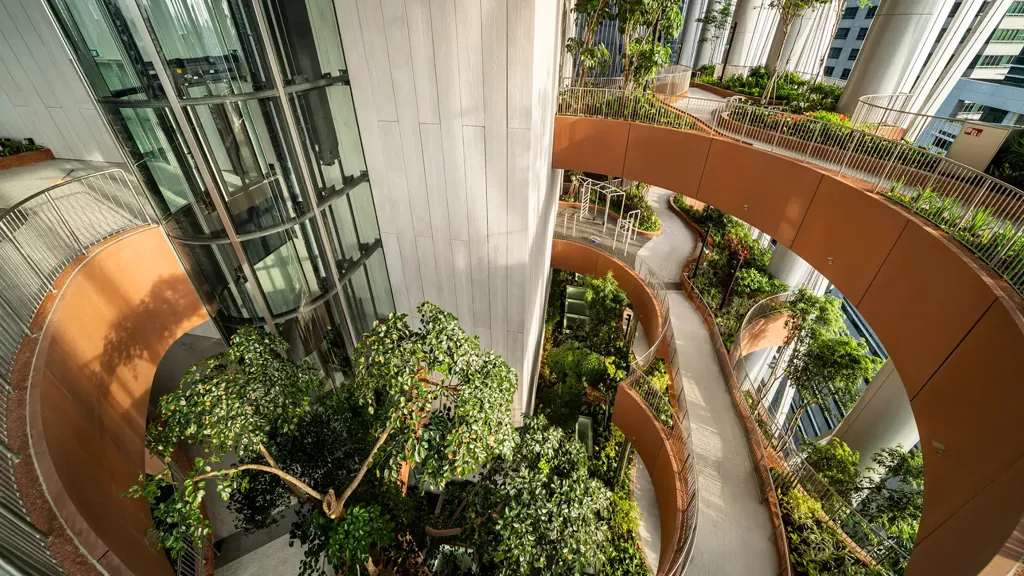BLOX is a new six-storey mixed-use facility located in a prime location on Copenhagen’s harbour front. The new home for the Danish Architecture Centre (DAC) and the Realdania Foundation, it houses offices, exhibition spaces, an auditorium, restaurant, residential apartments and an automatic car stacker in the basement.
Won in competition with OMA, our engineers had to deliver a complex project on a site with severe constraints, having to build both under and over an arterial route and being adjacent to the harbour and Frederiksholms Kanal. Our brief was to revitalise a key city site left vacant and derelict for 60 years.
Maximising potential with 3D design
From the outset, the key to BLOX was an ambition to maximise the potential of the site. We adopted 3D design to rationalise the architectural ambition with a series of stacked volumes representing mismatched structural grids and developed a simplified Revit model which we integrated with the architectural model.
The complex is designed as a stack of compact cubes each housing different functions within a structure that features significant cantilevers, long spans and double height volumes. Due to the complex interfaces between the structural truss beams, our structural engineers devised a construction sequence and demonstrated this to the contractor, Züblin. The deep basement of the existing building required significant excavation, and being adjacent to the harbour wall and listed historic buildings, there was a significant risk damage to neighbouring structures. To mitigate this, we carefully planned, modelled and assessed the construction, paying close attention to potential changes in water level.










